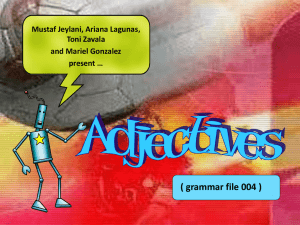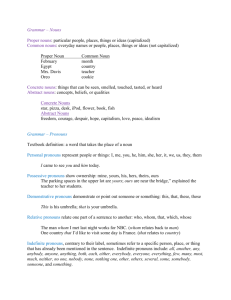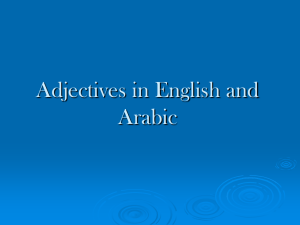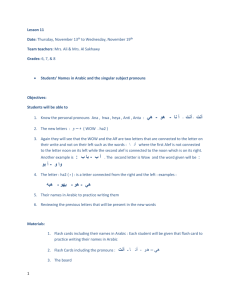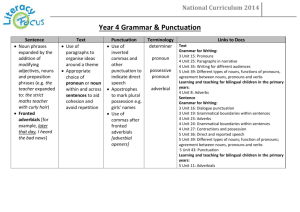Arabic Language (introductory course)
advertisement
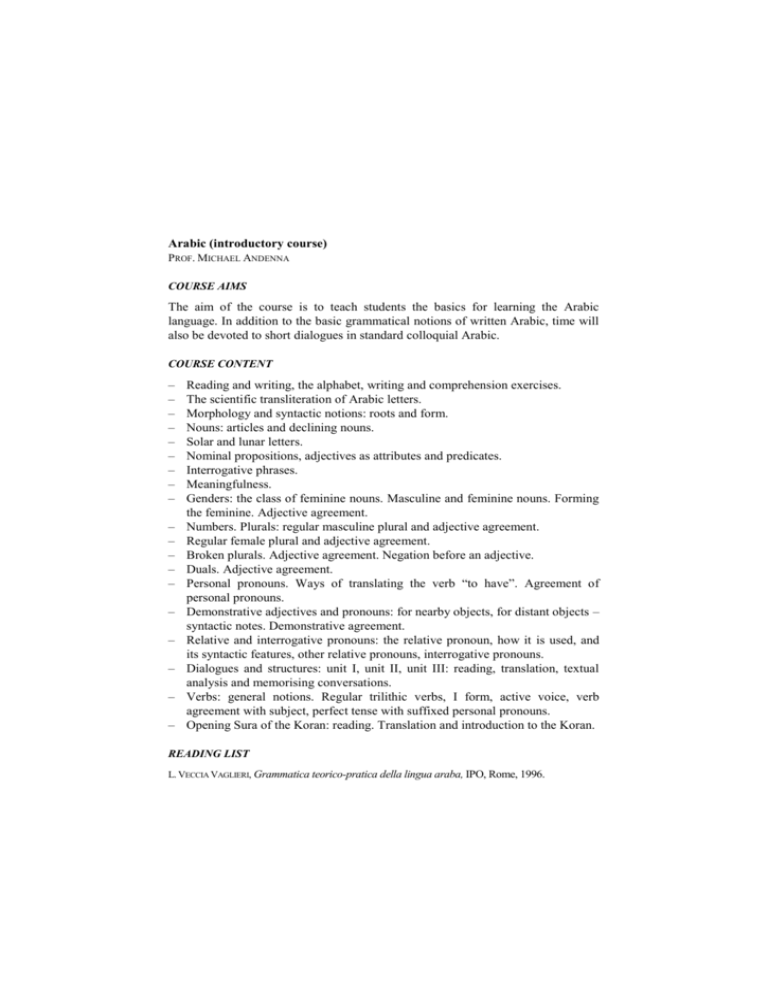
Arabic (introductory course) PROF. MICHAEL ANDENNA COURSE AIMS The aim of the course is to teach students the basics for learning the Arabic language. In addition to the basic grammatical notions of written Arabic, time will also be devoted to short dialogues in standard colloquial Arabic. COURSE CONTENT – – – – – – – – – – – – – – – – – – – Reading and writing, the alphabet, writing and comprehension exercises. The scientific transliteration of Arabic letters. Morphology and syntactic notions: roots and form. Nouns: articles and declining nouns. Solar and lunar letters. Nominal propositions, adjectives as attributes and predicates. Interrogative phrases. Meaningfulness. Genders: the class of feminine nouns. Masculine and feminine nouns. Forming the feminine. Adjective agreement. Numbers. Plurals: regular masculine plural and adjective agreement. Regular female plural and adjective agreement. Broken plurals. Adjective agreement. Negation before an adjective. Duals. Adjective agreement. Personal pronouns. Ways of translating the verb “to have”. Agreement of personal pronouns. Demonstrative adjectives and pronouns: for nearby objects, for distant objects – syntactic notes. Demonstrative agreement. Relative and interrogative pronouns: the relative pronoun, how it is used, and its syntactic features, other relative pronouns, interrogative pronouns. Dialogues and structures: unit I, unit II, unit III: reading, translation, textual analysis and memorising conversations. Verbs: general notions. Regular trilithic verbs, I form, active voice, verb agreement with subject, perfect tense with suffixed personal pronouns. Opening Sura of the Koran: reading. Translation and introduction to the Koran. READING LIST L. VECCIA VAGLIERI, Grammatica teorico-pratica della lingua araba, IPO, Rome, 1996. L. LADIKOFF GUASTO, Ahlan Grammatica araba didattico-comunicativa, Carocci, Rome, 2002. TEACHING METHOD Lectures. ASSESSMENT METHOD The course will include regular written and oral exercises to check how well students are learning the language. There will be an oral examination at the end of the course with exercises in reading, writing, translating sentences from Arabic into Italian and Italian into Arabic, and a short conversation in colloquial Arabic. NOTES Further information can be found on the lecturer's webpage at http://docenti.unicatt.it/web/searchByName.do?language=ENG, or on the Faculty notice board.

